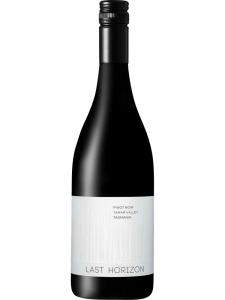-
中文名:塔斯马尼亚州
-
英文名:Tasmania
-
位置:
-
葡萄园面积:公顷
-
葡萄酒特点:
-
产区产量:
-
土壤:
Tasmania is the 'Island State' of the 'Island Continent', and the most southerly state of Australia. It lies 150 miles (240km) off the coast of Victoria, on the opposite side of the Bass Strait – a relatively shallow channel which separates the Great Australian Bight from the Tasman Sea. The climate here is markedly different from the mainland, and Pinot Noir and Chardonnay dominate the vineyards, making light, elegant still wines and some of Australia's best sparkling wines.
Located between the southern latitudes of 40 and 44 degrees (the Roaring Forties), Tasmania lies in a vast expanse of ocean stretching for many thousands of miles and interrupted only briefly to the east by the islands of New Zealand. Prevailing westerly winds blow across these southern oceans and hit Tasmania's west coast with substantial momentum, bringing with them heavy rainfall. This wild, wet climate makes the west of Tasmania better suited to the rainforest which covers it than to any form of viticulture. Strahan, on the west coast, receives more than twice as much rainfall as Launceston in the north. By contrast, Hobart, in the east, is the second-driest Australian state capital after Adelaide. It is in the more sheltered climates around Launceston and Hobart that Tasmania's main wine centers have developed.
The flag of Tasmania
In terms of topography, Tasmania is Australia's most mountainous state, with multiple mountain ranges criss-crossing the centre of the island. The highest point is Mount Ossa in the north-west, its peak sitting at 5305ft (1620m) above sea level. Most Tasmanian vineyards are located on lower slopes and valleys in the north and east, however, and enjoy a more moderate maritime climate.
As in the Yarra Valley and Mornington Peninsula across the Bass Strait in Victoria, the leading grape varieties here are Pinot Noir and Chardonnay, and all three regions are noted for their sparkling wines. In general, however, Tasmania's choice of grape varieties is closer to those of New Zealand than Australia, reflecting the cool maritime climate. Sauvignon Blanc is increasing year by year, as are Riesling and Pinot Gris. Tasmania's red varieties, Cabernet Sauvignon, Cabernet Franc and Merlot, remain essentially static, far behind the rest. Hardly any Shiraz is grown, further emphasizing the differences between Tasmania and the rest of Australia.
Tasmania's location means that it is often overlooked and forgotten, and this is no less true when it comes to wine. The wine world is only just beginning to recognize the diversity of terroir on the island and although Tasmania has its own zonal GI (Geographical Indication), none of its regions has been recognized. That said, Pipers River, Tamar Valley, the North West, Freycinet, Derwent Valley, Huon Valley and Coal River Valley are all recognized as having distinct climates, topography and geology, and correspondingly different wine styles.
Although still relatively small, Tasmania's wine production rose by more than 300% over the last decade, a trend supported and stimulated by increasing global recognition of Tasmanian wines.


